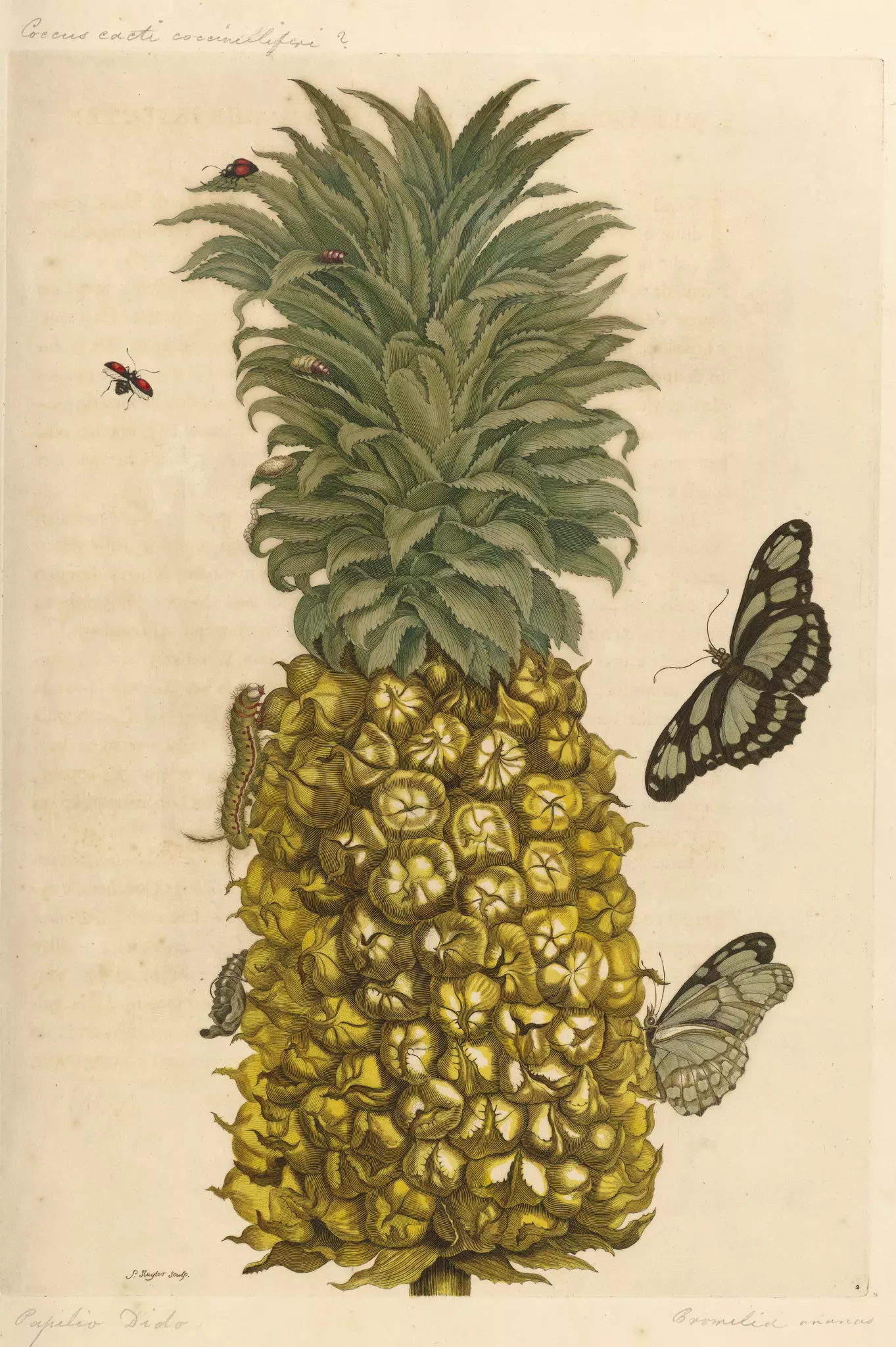26 May 2017
The woman who made science beautiful
Razwana Akram looks at the story of Maria Sibylla Merian.

A celebration of art and nature
2017 marks the tercentenary of Maria Sibylla Merian’s passing. Merian influenced many fields of study in the 16th century and her contribution to science, illustration and entomology was hugely significant.
Early life and family
Merian was born in Frankfurt, Germany on 2 April 1647 and was of Swiss ancestry. Her father was the Swiss engraver and publisher Matthäus Merian and her mother was Johanna Sybilla Heyne. They married in 1646 and a year later Maria was born. Her father died in 1650, and in 1651 her mother was remarried to the painter Jacob Marrel, known for his work with flowers and still lifes. It was Morrell who taught Merian the art of drawing and illustration.
Metamorphosis
Merian had a fascination with plants and insects from a very early age. She was known to have kept silkworms and caterpillars from the age of thirteen to observe the metamorphosis that they underwent.
It was these observations that contributed to the detailed accuracy in Merian’s work. She even impressed Carl Linnaeus, the father of modern botanical and zoological nomenclature, with her accuracy. When Linnaeus created his famous work Systema Naturae, listing, describing and naming all 4,400 animal species in the world known to him at the time, he was so confident in the accuracy of Merian's observations that he was happy to base several of his entries purely on Merian’s observations.
Merian is known to have produced works such as Neues Blumenbuch and Der Raupen wunderbare Verwandlung und sonderbare Blumennahrung, but she is chiefly known for her work on Metamorphosis Insectorum Surinamensium.

Journey to Surinam
Metamorphosis Insectorum Surinamensium was published in 1705 in both Dutch and Latin and included 60 plates of engravings. It captured the plants, animals and wildlife of the Surinam region.
Surinam was a Dutch colony from 1667 to 1954 and was located on the northern coast of South America. The expedition to Surinam was sponsored by the city of Amsterdam in 1699. Merian would make this journey at the age of 52 and would be accompanied by her young daughter Dorothea. The trip was to be a five year stay where Merian was to sketch the plants, insects and animals whilst there. Unfortunately though, illness forced Merian to return to Amsterdam after two years, cutting short her planned stay. However, during her time there Merian produced Metamorphosis Insectorum Surinamensium.
A love of art and nature
Her work differed from many other publications at that time, as it was the first time animals, plants and insects were illustrated together so beautifully. It was also the first time a metamorphosis was completely illustrated, which contradicted many previous theories of metamorphoses at the time. Merian also documented many of the plants, insects and wildlife of the region which had not previously been seen.
Merian's love of art and nature can be summed up by her own quote.
“Art and nature shall always be wrestling until they eventually conquer one another so that the victory is the same stroke and line, that which is conquered, conquers at the same time.” - Maria Sibylla Merian.
- Razwana Akram -
Library Graduate Trainee


